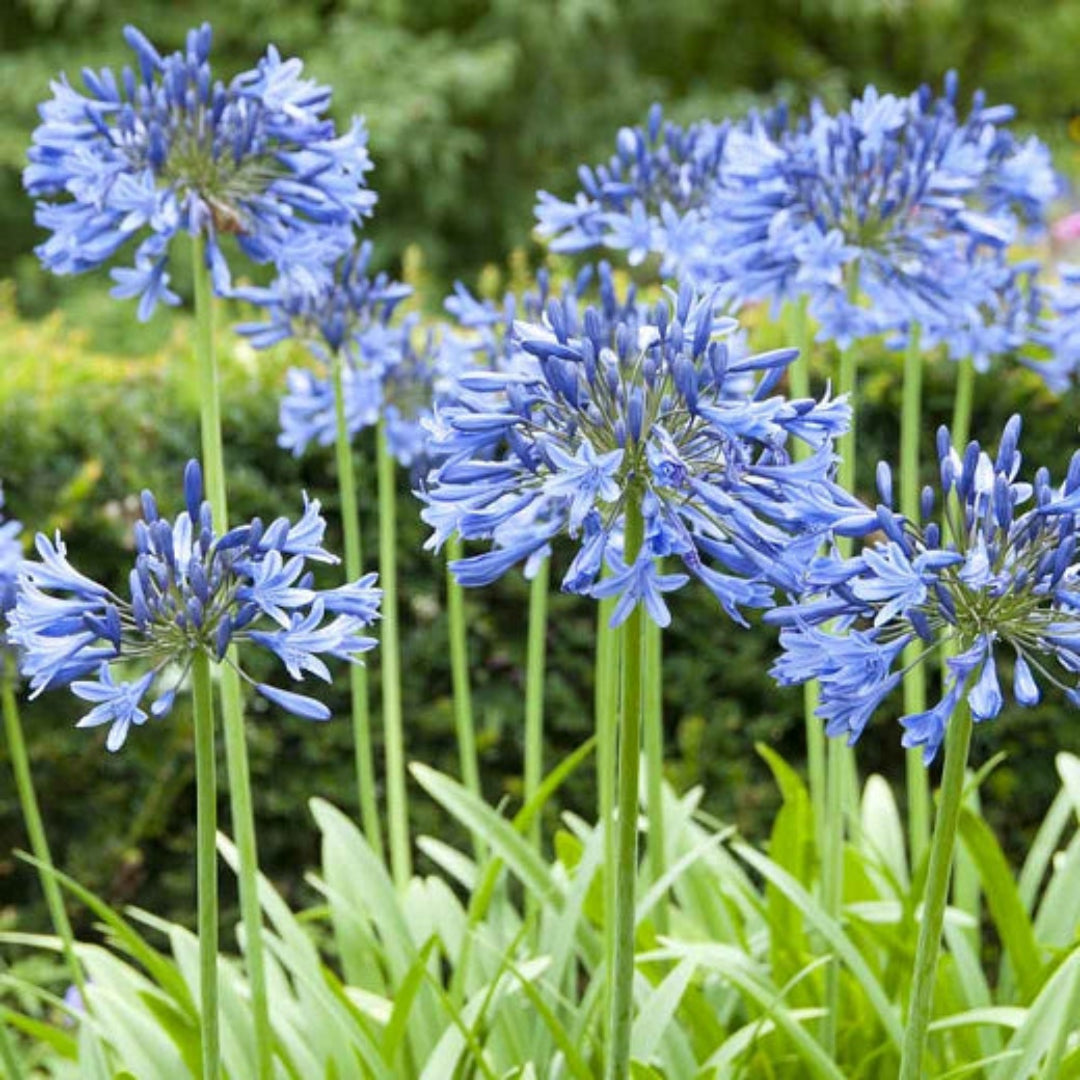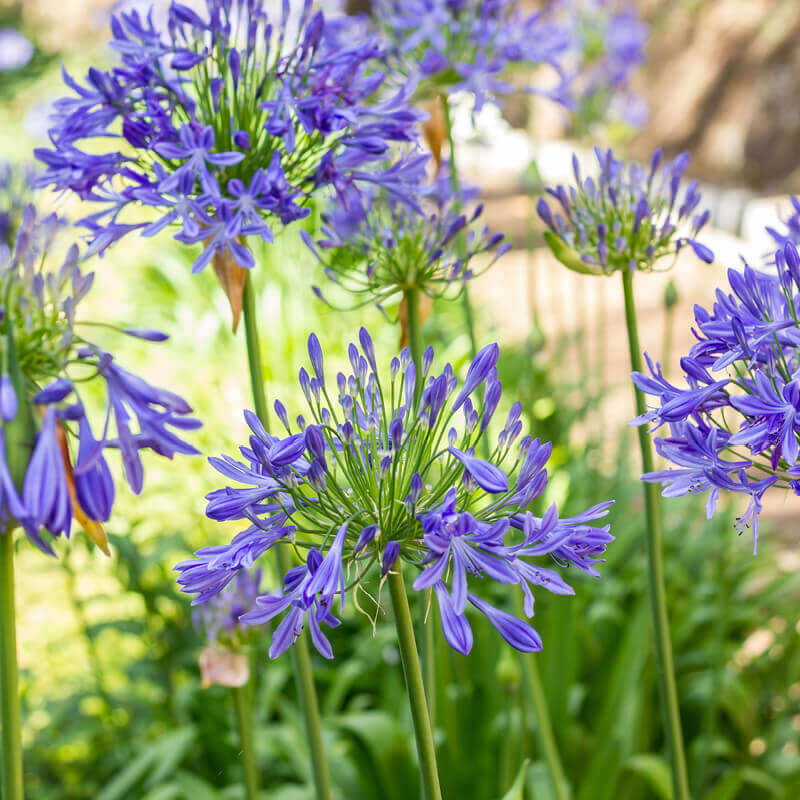Agapanthus Varieties: Picking the Best for Your Landscape
Wiki Article
Understanding the Art of Agapanthus Care: Essential Steps for Healthy Development and Dynamic Blooms
In the realm of gardening, the cultivation of agapanthus stands as a rewarding endeavor for those who look for to nurture these sophisticated flowering plants. From choosing the right range to mastering pruning techniques, the trip in the direction of cultivating growing agapanthus plants is multifaceted and holds the key to unlocking the complete possibility of these agricultural treasures.
Picking the Right Agapanthus Selection

When picking the right Agapanthus variety for your yard, take into consideration variables such as environment suitability, blossom color, and development behavior. Agapanthus, typically referred to as Lily of the Nile or African lily, is available in a variety of colors varying from shades of blue and purple to white. Select a flower shade that matches your existing yard combination to produce an unified landscape. In addition, take into consideration the climate in your area to guarantee the Agapanthus selection you pick can grow in your particular problems. Some selections are extra forgiving of cold temperatures, while others choose warmer environments. Understanding the development behavior of various Agapanthus selections is important for correct placement within your yard. Some ranges have a clumping growth routine, suitable for containers or borders, while others have an even more spreading nature, suitable for ground cover or mass plantings. By very carefully evaluating these aspects, you can select the ideal Agapanthus variety to boost the elegance of your garden.
Perfect Planting Problems
Thinking about the ideal environmental requirements is crucial for successful Agapanthus farming. Agapanthus flourishes in well-draining soil with a slightly acidic to neutral pH degree. When planting, pick an area that gets complete sunlight to partial shade. In hotter environments, supplying some mid-day shade can prevent scorching of the leaves. Agapanthus plants are sensitive to chilly temperatures and should be secured from frost throughout winter months.To guarantee healthy and balanced growth and dynamic flowers, plant Agapanthus bulbs at a deepness of about 2-4 inches and area them 8-12 inches apart. Adding raw material, such as garden compost, to the dirt can enhance water drainage and fertility, advertising durable origin development. Mulching around the base of the plants helps preserve moisture and suppresses weed development. Routine watering is essential, specifically throughout the growing period, to keep the dirt continually wet however not saturated.
Watering and Fertilizing Tips
Keeping proper dampness degrees and offering vital nutrients are crucial elements in the care program for Agapanthus plants. When it concerns watering Agapanthus, it is crucial to strike an equilibrium. If overwatered, these plants choose consistently moist soil but are vulnerable to root rot. Throughout the expanding season, water deeply as soon as a week, guaranteeing the soil is well-draining to protect against waterlogging. In hotter climates or during periods of drought, more frequent watering may be needed to maintain the dirt uniformly damp. Nonetheless, decrease watering in the winter months to prevent waterlogged conditions.Fertilizing Agapanthus is necessary for advertising healthy growth and prolific blooms. Apply a well balanced plant food, such as a 10-10-10 formula, in the early spring as brand-new growth emerges. Repeat this application every 6-8 weeks throughout the expanding season. Prevent extreme fertilizing, as it can cause lavish vegetation at the cost of blooms. Constantly adhere to the producer's instructions for correct dilution and application methods. By following these watering and feeding ideas, you can guarantee your Agapanthus plants prosper and produce lively, long-lasting blooms.
Pruning Methods for Agapanthus
Pruning Agapanthus plants at the suitable times and with proper strategies is vital for maintaining their health and wellness and promoting ideal growth and blooming. The suitable time to prune Agapanthus is in late winter or very early springtime before new growth arises. Begin by removing any type of dead or yellowing fallen leaves near the base of the plant. Cut them as short as feasible without damaging the emerging shoots.For flowered stems, wait until the blossoms have actually withered and after that cut them back to the base. This not only tidies up the plant's look however likewise website link urges the growth of brand-new blossom buds. Deadheading invested blossoms can also reroute the plant's power right into producing even more blooms rather than setting seeds. Nonetheless, if you wish to gather seeds for proliferation, leave some blossoms to dry and fully grown on the plant.
Keep in mind to utilize clean, sharp tools to make specific cuts and reduce the risk of introducing illness. Agapanthus. Regular pruning will certainly help keep your Agapanthus looking healthy and cool while making sure a plentiful screen of beautiful blooms
Dealing With Usual Bugs and Illness
After guaranteeing appropriate trimming techniques for Agapanthus, it is crucial to resolve typical insects and illness that can affect the health and wellness and vigor of these plants. One typical parasite that influences Agapanthus is the Agapanthus gall midge.Another usual issue is fungal leaf place, which offers as their explanation dark sores on the leaves. To stop fungal illness, make certain great air circulation around the plants, avoid above watering, and remove any infected fallen leaves immediately. Additionally, Agapanthus plants can struggle with root rot if they are planted in inadequately draining dirt. To avoid this, plant Agapanthus in well-draining dirt and stay clear of overwatering. By being watchful and taking prompt action against diseases and parasites, you can assist your Agapanthus plants grow and produce check this site out vivid blossoms.

Conclusion
In final thought, understanding the art of agapanthus care entails choosing the right selection, providing suitable planting conditions, correct watering and feeding, proper pruning methods, and dealing with common parasites and illness. By complying with these crucial actions, you can guarantee healthy and balanced development and vibrant flowers for your agapanthus plants. Bear in mind to on a regular basis keep an eye on and preserve your plants to promote their overall health and durability.To ensure healthy development and lively blooms, plant Agapanthus light bulbs at a deepness of regarding 2-4 inches and area them 8-12 inches apart. By following these watering and fertilizing suggestions, you can ensure your Agapanthus plants thrive and create vibrant, lasting flowers.
One typical parasite that influences Agapanthus is the Agapanthus gall midge. Additionally, Agapanthus plants can endure from origin rot if they are grown in inadequately draining dirt. By complying with these important actions, you can guarantee healthy and balanced development and vivid blooms for your agapanthus plants.
Report this wiki page